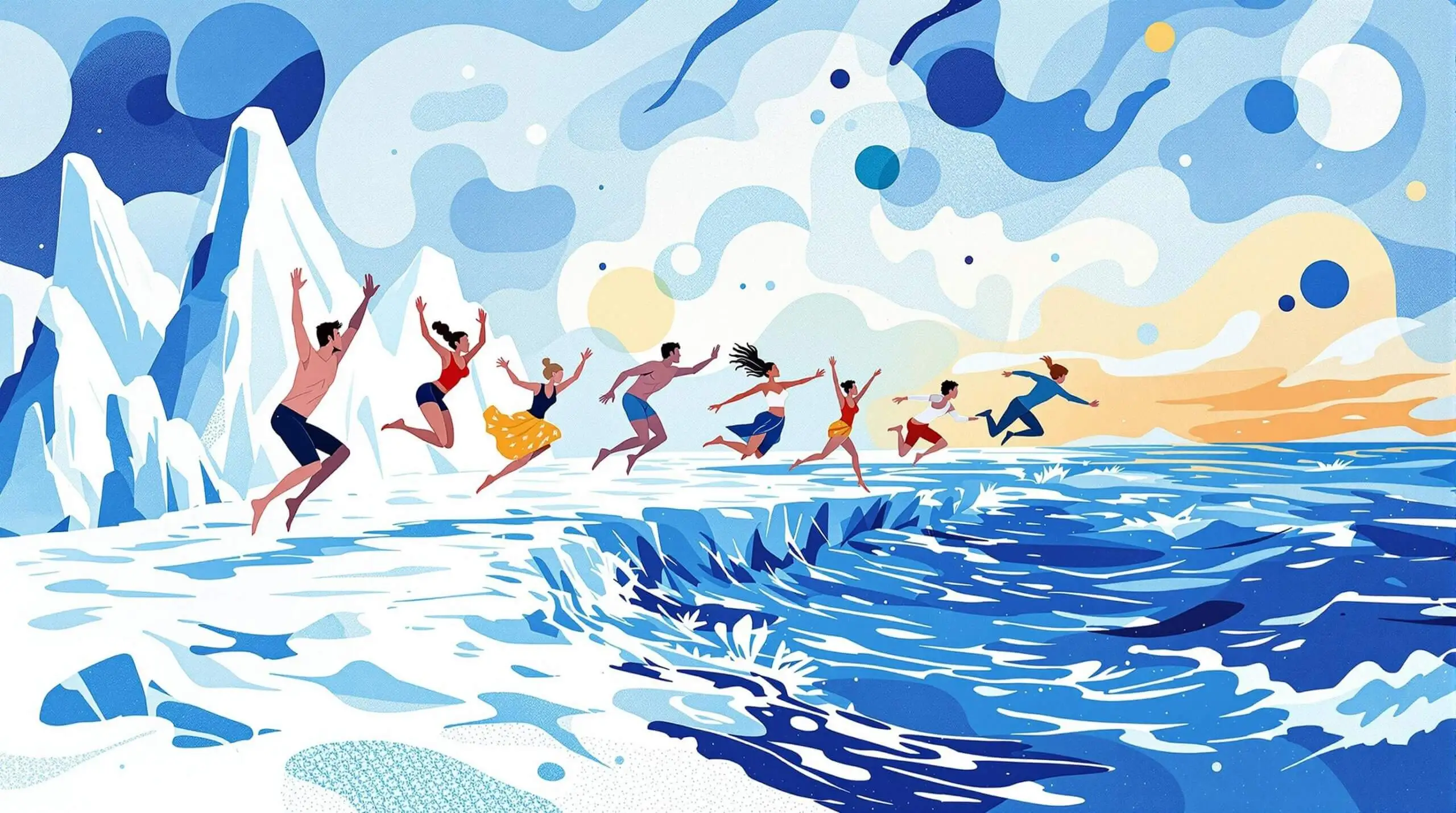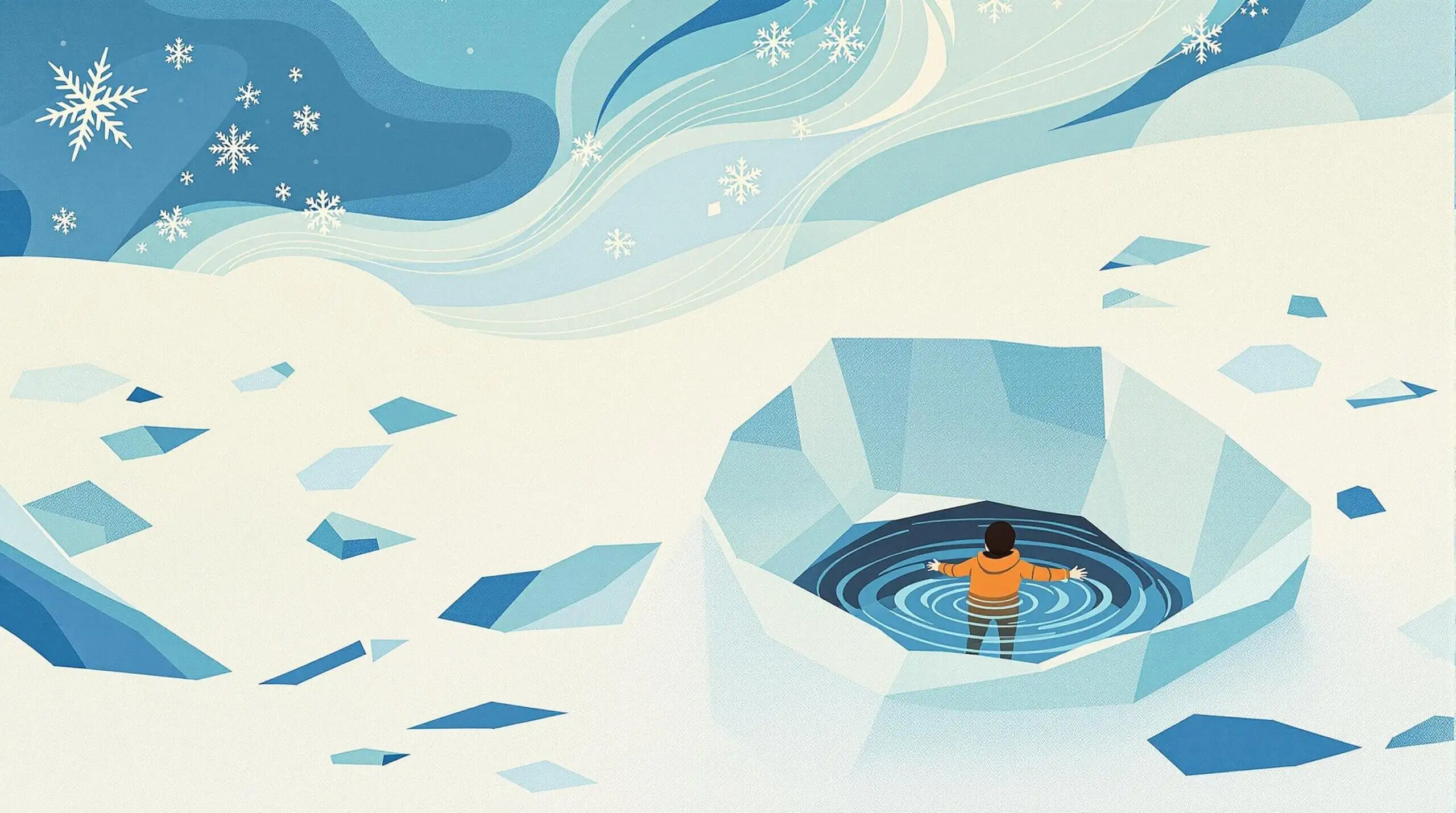Polar Plunges: Cold Water Immersion for Long Life
Explore the benefits of polar plunges and how cold water immersion may contribute to a longer, healthier life.

Understanding Cold Water Immersion and Its Impact on Longevity
The Science Behind Cold Water Exposure
Jumping into icy water might seem like madness, but there’s solid science behind this practice. Cold water immersion triggers a cascade of physiological responses that could extend our lifespan. When your body hits cold water, it activates what scientists call hormetic stress – a beneficial type of stress that makes our cells more resilient.
Historical Context and Cultural Significance
Cold water therapy isn’t new. The ancient Romans swore by it, Nordic populations have practiced it for centuries, and modern athletes have turned it into a performance-enhancing ritual. But what’s fascinating is how modern science is validating these age-old practices. Research now shows that regular cold exposure might activate longevity-promoting pathways in our bodies.
The Biology of Cold Exposure
When you immerse yourself in cold water, your body responds dramatically. Blood vessels constrict, heart rate increases, and stress hormones surge. But here’s the interesting part: this short-term stress leads to long-term adaptations. Your body becomes better at handling various forms of stress, potentially slowing down the aging process.
Research indicates that regular cold exposure can increase life expectancy through multiple mechanisms. It boosts mitochondrial function, reduces inflammation, and activates brown fat – all factors linked to increased lifespan. Studies show that cold water swimmers have better stress resistance and immune function compared to the general population.

The Current Science of Cold Water Immersion
Recent Research Findings
Scientists have discovered that cold exposure activates specific proteins called cold-shock proteins. These proteins, particularly one called RBM3, help protect brain cells and may slow cognitive decline. A 2019 study found that regular cold water swimmers had significantly higher levels of these protective proteins.
Metabolic Benefits
Cold water immersion increases metabolic rate by up to 350%, forcing the body to work harder to maintain core temperature. This process activates brown fat, which burns energy to produce heat. Regular exposure can increase brown fat activity, improving metabolic health – a key factor in longevity.
Immune System Effects
Regular cold exposure trains the immune system. Studies show increased levels of white blood cells and anti-inflammatory molecules in cold water swimmers. This improved immune function could help prevent age-related diseases and extend healthspan.
Practical Aspects of Cold Water Immersion
Safe Practice Guidelines
Cold water immersion requires careful approach. The initial shock can be intense, and proper technique is crucial. Start with shorter durations and gradually build up. The water temperature should typically be below 60°F (15.5°C) to trigger the beneficial responses.
Frequency and Duration
Research suggests that consistent exposure produces better results than occasional dips. Most studies show benefits from 2-3 sessions per week, with immersion times ranging from 1-5 minutes for beginners to up to 20 minutes for experienced practitioners.
Physiological Mechanisms and Longevity Benefits
Stress Response and Adaptation
Cold water immersion triggers the release of norepinephrine, which reduces inflammation and improves mood. Regular exposure leads to better stress handling capacity, potentially reducing the impact of chronic stress on aging.
Cardiovascular Effects
The cold shock response improves cardiovascular health by strengthening the heart and blood vessels. Regular practitioners show improved blood pressure regulation and reduced risk of heart disease – major factors in longevity.
Cellular Impact
At the cellular level, cold exposure activates sirtuins – proteins that regulate aging and longevity. It also increases production of heat shock proteins, which help maintain proper protein folding and cellular repair mechanisms.
Getting Started with Cold Water Immersion
- Begin with cool showers and gradually reduce temperature
- Start with brief exposures of 30 seconds to 1 minute
- Never practice alone – always have a safety buddy
- Warm up properly before and after exposure
- Listen to your body and don’t push too hard
- Stay hydrated and maintain good nutrition
- Check with your doctor if you have heart conditions
- Practice proper breathing techniques
- Monitor your response and recovery
- Join a local cold water swimming group for guidance
Common Mistakes to Avoid
- Staying in too long during initial sessions
- Forcing yourself to endure extreme discomfort
- Skipping the warm-up phase
- Practicing alone in open water
- Ignoring warning signs from your body
- Going too cold too quickly
- Hyperventilating or holding breath
- Neglecting proper recovery
Research-Backed Benefits for Longevity
Studies consistently show multiple benefits that could extend lifespan: – 15-30% increase in immune cell production – Up to 40% reduction in stress hormone levels – Significant increase in anti-inflammatory markers – Enhanced autophagy (cellular cleanup) – Improved insulin sensitivity – Better sleep quality
Advanced Techniques and Considerations
Progressive Adaptation Methods
Advanced practitioners can explore various methods to enhance benefits. These include contrast therapy (alternating hot and cold), longer duration exposures, and combining cold immersion with breath work. Each approach offers unique benefits for longevity.
Equipment and Safety Gear
Proper equipment matters. Temperature gauges, timing devices, and safety equipment are essential. For open water swimming, bright caps, tow floats, and wetsuit options should be considered. These tools help maximize benefits while ensuring safety.
Future Directions in Cold Water Therapy Research
Emerging Studies
Current research is exploring the genetic impacts of cold exposure. Scientists are investigating how cold shock proteins might protect against neurodegenerative diseases and studying the role of brown fat activation in longevity.
Integration with Other Longevity Practices
Researchers are examining how cold water immersion complements other longevity practices like fasting, exercise, and meditation. Early results suggest synergistic effects when these practices are combined thoughtfully.
Daily Implementation Tips
- Create a consistent schedule for cold exposure
- Track your progress and physiological responses
- Incorporate breathing exercises
- Build a support network of fellow practitioners
- Document your experience through journaling
- Adjust intensity based on seasonal changes
- Balance cold exposure with other healthy habits
Cold water immersion represents a powerful tool in the quest for longevity. The evidence supporting its benefits grows stronger each year, showing improvements in immune function, stress resistance, and cellular health. While it requires careful approach and proper safety measures, the potential rewards for lifespan and healthspan make it worth considering. By starting gradually and maintaining consistent practice, cold water immersion can become a valuable addition to your longevity toolkit.